2,4,6-Tri-tert-butylphenol
Synonym(s):P23;p35;p35nck5a;PSSALRE;Rosenthal fiber component
- CAS NO.:732-26-3
- Empirical Formula: C18H30O
- Molecular Weight: 262.43
- MDL number: MFCD00008821
- EINECS: 211-989-5
- SAFETY DATA SHEET (SDS)
- Update Date: 2025-09-25 17:15:13
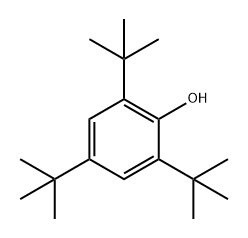
What is 2,4,6-Tri-tert-butylphenol?
Chemical properties
Solid. Insoluble in water; soluble in most organic solvents. Combustible.
The Uses of 2,4,6-Tri-tert-butylphenol
2,4,6-Tri-tert-butylphenol is an antioxidant; used in preparation method of high-temperature resistant electromagnetic shielding electromagnetic bushing.
Flammability and Explosibility
Non flammable
Purification Methods
Distil the phenol under reduced pressure and/or recrystallise it from n-hexane or several times from 95% EtOH until the EtOH solution is colourless [Balasubramanian & Bruice J Am Chem Soc 108 5495 1986]. It has also been purified by sublimation [Yuan & Bruice J Am Chem Soc 108 1643 1986, Wong et al. J Am Chem Soc 109 3428 1987]. Purification has also been achieved by passage through a silica gel column followed by recrystallisation from n-hexane [Kajii et al. J Phys Chem 91 2791 1987]. [Beilstein 6 III 2094, 6 IV 3539.]
Toxicity evaluation
In order to study the chronic toxicity of 2,4,6-tri-tert-butylphenol (TTBP), groups of 40 Slc: Wistar rats of either sex were fed a diet containing 0, 30, 100, 300, or 1000 ppm of TTBP for up to 24 months. Hematological, biochemical, and histopathological examinations performed periodically revealed slight microcytic anemia, changes in some biochemical parameters relating to liver function, and focal necrosis of liver cells following TTBP administration, and these changes observed in females were more severe than those in males. No neoplastic responses following TTBP administration were noted. Hence, it was concluded that TTBP causes liver injury characterized by focal necrosis with microcytic anemia and elevations of serum phospholipids and cholesterol levels, presumably occurring as secondary effects following the liver injury[1].
References
[1] Matsumoto, Kiyoshi , et al. "Chronic toxicity of 2,4,6-tri-tert-butylphenol in rats." Journal of Toxicological Sciences 16.4(1991):167.
Properties of 2,4,6-Tri-tert-butylphenol
| Melting point: | 125-130 °C (lit.) |
| Boiling point: | 277 °C (lit.) |
| Density | 0.8640 |
| vapor pressure | 0.073Pa at 25℃ |
| refractive index | 1.5029 (estimate) |
| Flash point: | 130 °C |
| storage temp. | -70°C |
| solubility | Chloroform (Slightly), DMSO (Slightly, Sonicated) |
| pka | 12.61±0.40(Predicted) |
| form | buffered aqueous glycerol solution |
| color | Off-White to Pale Yellow |
| Water Solubility | insoluble |
| BRN | 1913256 |
| CAS DataBase Reference | 732-26-3(CAS DataBase Reference) |
| NIST Chemistry Reference | Phenol, 2,4,6-tris(1,1-dimethylethyl)-(732-26-3) |
| EPA Substance Registry System | 2,4,6-Tris(tert-butyl)phenol (732-26-3) |
Safety information for 2,4,6-Tri-tert-butylphenol
| Signal word | Danger |
| Pictogram(s) |
 Exclamation Mark Irritant GHS07  Health Hazard GHS08  Environment GHS09 |
| GHS Hazard Statements |
H302:Acute toxicity,oral H317:Sensitisation, Skin H373:Specific target organ toxicity, repeated exposure H410:Hazardous to the aquatic environment, long-term hazard |
| Precautionary Statement Codes |
P202:Do not handle until all safety precautions have been read and understood. P273:Avoid release to the environment. P280:Wear protective gloves/protective clothing/eye protection/face protection. P301+P312:IF SWALLOWED: call a POISON CENTER or doctor/physician IF you feel unwell. P302+P352:IF ON SKIN: wash with plenty of soap and water. P308+P313:IF exposed or concerned: Get medical advice/attention. |
Computed Descriptors for 2,4,6-Tri-tert-butylphenol
| InChIKey | PFEFOYRSMXVNEL-UHFFFAOYSA-N |
New Products
BOC-L-4-HYDROXYPROLINE 2-nitro 3-hydroxy pyridine 2,6-Dichloropyridin-4-amine 2,3 Diamino pyridine 5-Iodo-2-(1-methylethyl)-3(2H)-pyridazinone 1-Azetidinecarboxylic acid, 3-[(3S)-1-(trans-3-carboxy-3-methylcyclobutyl)-3-piperidinyl]-, 1-(1,1-dimethylethyl) ester Tert-Butyl N-[3-(dimethylcarbamoyl)prop-2-en-1-yl]carbamate 1-(difluoromethyl)-N-methylcyclobutan-1-amine 2-(4-Methyl-1,2,5-oxadiazol-3-yl)-1H-benzimidazole 6-(4-iodophenyl)-1-oxa-6-azaspiro[3.3]he Trimethyl(phenylthio)silane Polycaprolactone(2000)-PEG(20000)-Polycaprolactone(2000) Diacrylate Diethylene Glycol Monoethyl Ether, PolyoxyethyleneOleylCetylEtherSulfosuccinate Ascorbyl Tetraisopalmitate or Tetrahexyldecyl Ascorbate Castor Oil, Ethoxylated, Cremophor EL or PEG-35 Castor Oil Tween 20 or Polysorbate 20 Acetone-d6 (R)-2-Mercaptobutanoic acid 3-iodo-1H-pyrazolo[3,4-d]pyrimidin-4-amine 3-(naphthalen-1-ylsulfonyl)-1H-indazol-5-amine methyl 5-amino-3-(1,1-dioxidotetrahydro-2H-1,2-thiazin-2-yl)-2-fluorobenzoate 7-methoxy-8-(2-morpholinoethoxy)-4-((3,4,5-trimethoxyphenyl)amino)benzo[g]quinoline-3-carbonitrile Dimethylaluminum isopropoxideRelated products of tetrahydrofuran
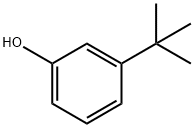

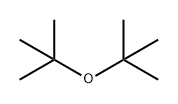
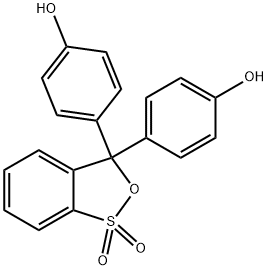

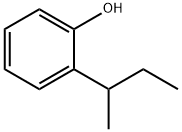
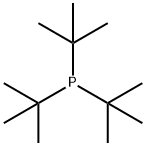
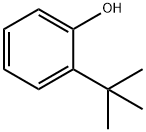
You may like
-
 Anti-CRYAB antibody produced in rabbit CASView Details
Anti-CRYAB antibody produced in rabbit CASView Details -
 Anti-CRYAB antibody produced in rabbit CASView Details
Anti-CRYAB antibody produced in rabbit CASView Details -
 CDK5/p25, active, GST tagged human CASView Details
CDK5/p25, active, GST tagged human CASView Details -
 2,4,6-Tri-tert-butylphenol CAS 732-26-3View Details
2,4,6-Tri-tert-butylphenol CAS 732-26-3View Details
732-26-3 -
 5721-91-5 98%View Details
5721-91-5 98%View Details
5721-91-5 -
 Calcium 11% clear solution 98%View Details
Calcium 11% clear solution 98%View Details -
 Sodium Croscarmellose 98%View Details
Sodium Croscarmellose 98%View Details
74811-65-7 -
 16455-61-1 98%View Details
16455-61-1 98%View Details
16455-61-1
